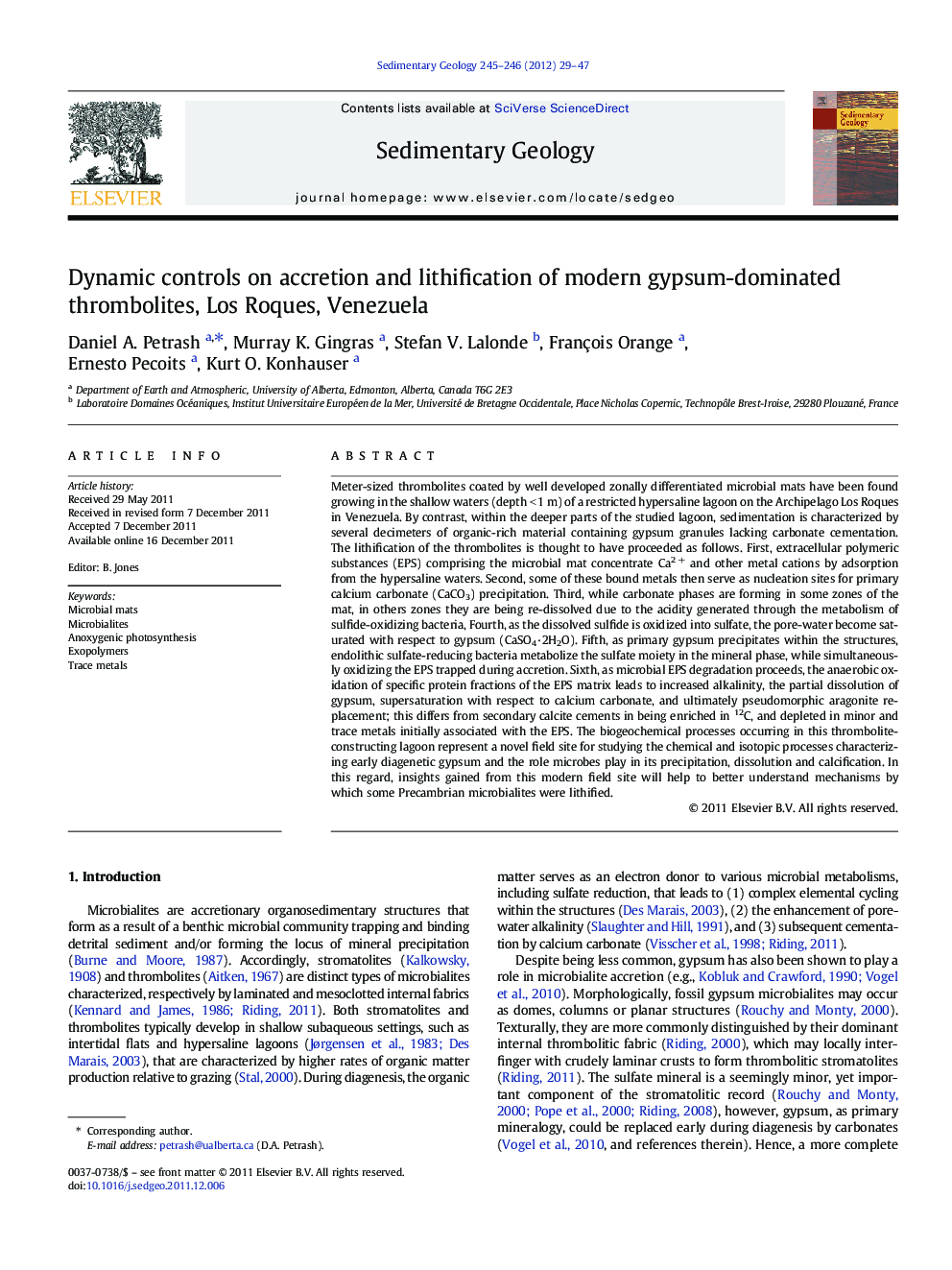| کد مقاله | کد نشریه | سال انتشار | مقاله انگلیسی | نسخه تمام متن |
|---|---|---|---|---|
| 4689872 | 1636098 | 2012 | 19 صفحه PDF | دانلود رایگان |

Meter-sized thrombolites coated by well developed zonally differentiated microbial mats have been found growing in the shallow waters (depth < 1 m) of a restricted hypersaline lagoon on the Archipelago Los Roques in Venezuela. By contrast, within the deeper parts of the studied lagoon, sedimentation is characterized by several decimeters of organic-rich material containing gypsum granules lacking carbonate cementation. The lithification of the thrombolites is thought to have proceeded as follows. First, extracellular polymeric substances (EPS) comprising the microbial mat concentrate Ca2 + and other metal cations by adsorption from the hypersaline waters. Second, some of these bound metals then serve as nucleation sites for primary calcium carbonate (CaCO3) precipitation. Third, while carbonate phases are forming in some zones of the mat, in others zones they are being re-dissolved due to the acidity generated through the metabolism of sulfide-oxidizing bacteria, Fourth, as the dissolved sulfide is oxidized into sulfate, the pore-water become saturated with respect to gypsum (CaSO4·2H2O). Fifth, as primary gypsum precipitates within the structures, endolithic sulfate-reducing bacteria metabolize the sulfate moiety in the mineral phase, while simultaneously oxidizing the EPS trapped during accretion. Sixth, as microbial EPS degradation proceeds, the anaerobic oxidation of specific protein fractions of the EPS matrix leads to increased alkalinity, the partial dissolution of gypsum, supersaturation with respect to calcium carbonate, and ultimately pseudomorphic aragonite replacement; this differs from secondary calcite cements in being enriched in 12C, and depleted in minor and trace metals initially associated with the EPS. The biogeochemical processes occurring in this thrombolite-constructing lagoon represent a novel field site for studying the chemical and isotopic processes characterizing early diagenetic gypsum and the role microbes play in its precipitation, dissolution and calcification. In this regard, insights gained from this modern field site will help to better understand mechanisms by which some Precambrian microbialites were lithified.
► Unusual subaqueous gypsum-rich microbialites exhibiting a thrombolitic fabric.
► Gypsum precipitates as a result of ongoing bacterial sulfide oxidation.
► Gypsum is replaced by pseudomorphic aragonite via sulfate reduction.
► Early diagenetic magnesian calcite cements stabilize the thrombolite framework.
► Plausible analogs to ancient meter-scale gypsum microbialites.
Journal: Sedimentary Geology - Volumes 245–246, 1 March 2012, Pages 29–47